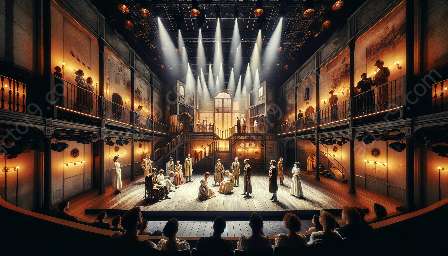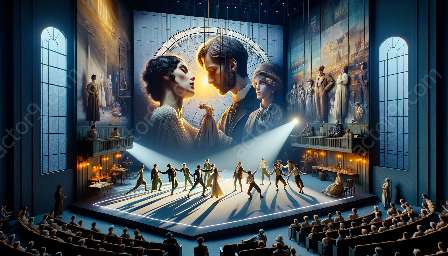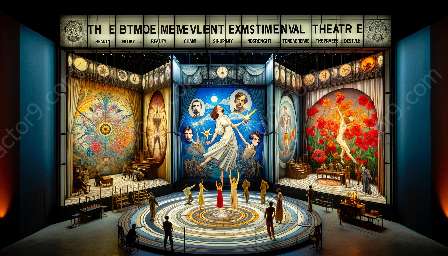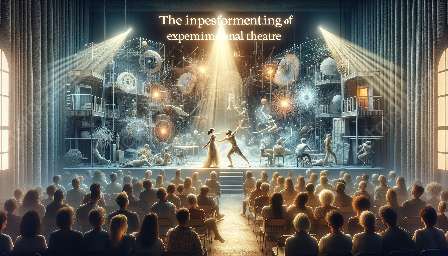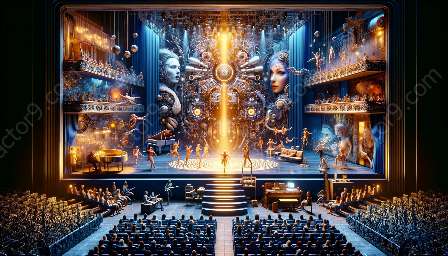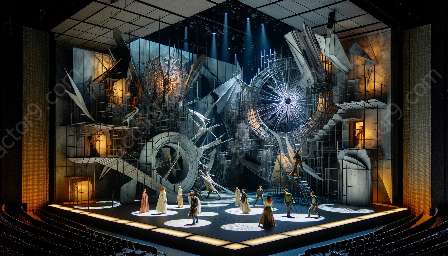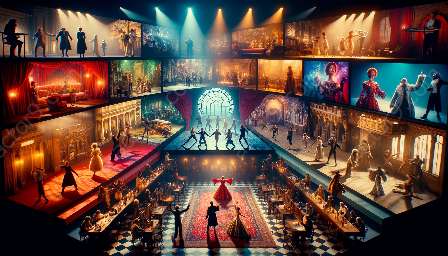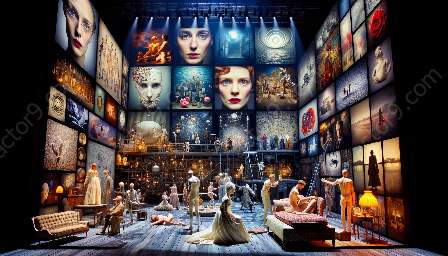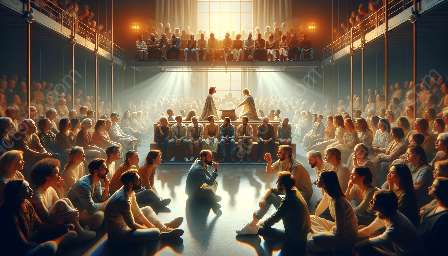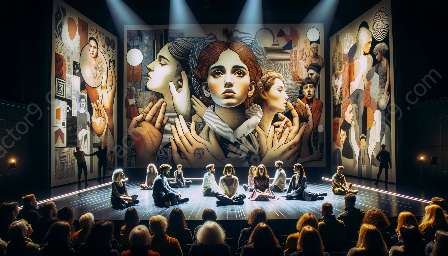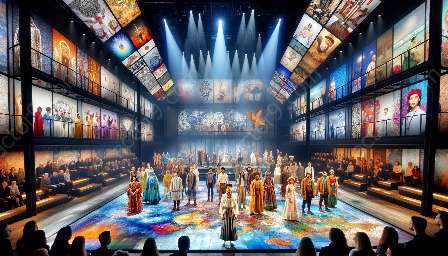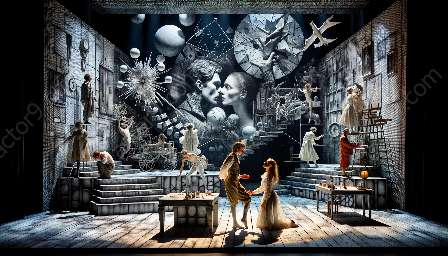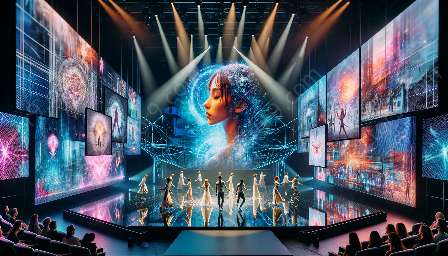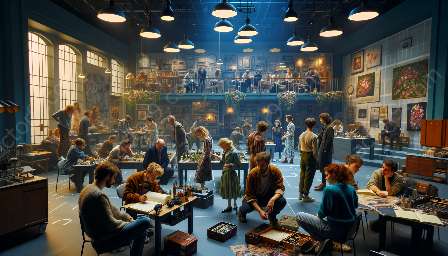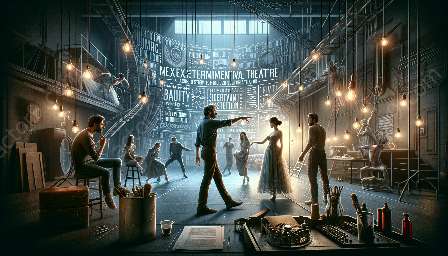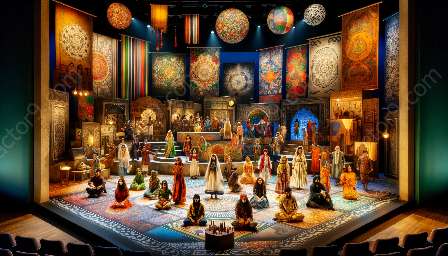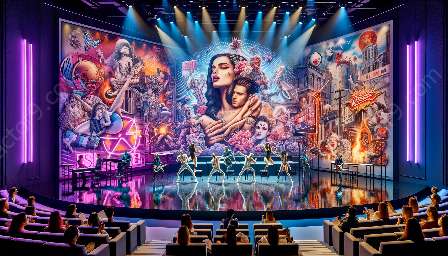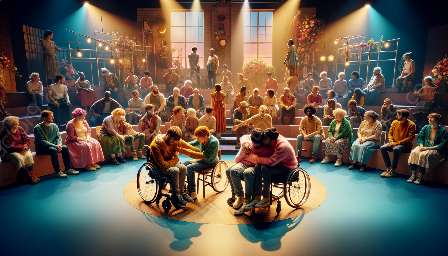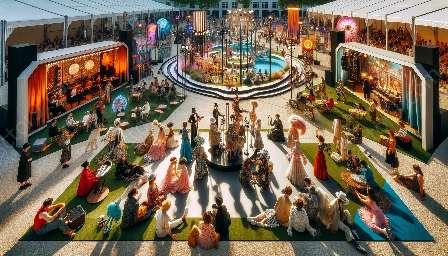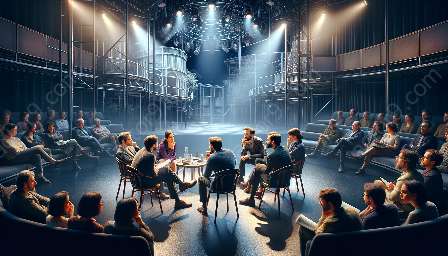Experimental theatre is a vibrant and innovative art form that often pushes the boundaries of traditional performance. At the heart of this groundbreaking approach lies the crucial role of design and visual elements in shaping and enhancing the audience's engagement with the production. In this comprehensive exploration, we will delve into the various facets of design and visual elements in experimental theatre, while also considering their interplay with experimental theatre criticism and analysis.
The Role of Design in Experimental Theatre
Design in experimental theatre encompasses a wide range of elements, including set design, lighting, costumes, props, and multimedia integration. These elements are not merely aesthetic enhancements, but rather powerful tools that contribute to the overall theatrical experience and narrative construction.
Set Design and Spatial Dynamics
One of the most striking features of experimental theatre is its unconventional use of space. Set design plays a pivotal role in redefining and transforming the traditional stage, often challenging the audience's spatial expectations. The dynamic interaction between performers and the set creates immersive experiences that blur the line between the stage and the audience, inviting active engagement and participation.
Lighting and Atmosphere
The strategic use of lighting is a fundamental aspect of creating the atmospheric landscape of experimental theatre. Lighting not only illuminates the stage but also shapes moods, emotions, and the perception of space and time. It often serves as a vital narrative device, guiding the audience through nonlinear or fragmented storytelling.
Costumes and Symbolism
Costumes play a significant role in experimental theatre, serving as visual cues that convey meaning beyond mere aesthetics. Through costume design, performers embody characters and themes, blurring the boundaries between the physical and the metaphorical. Symbolic elements within the costumes can carry profound narrative weight, adding layers of interpretation for the audience.
Props and Interactivity
Experimental theatre frequently employs props in unconventional ways, turning them into multi-functional and symbolic objects that transcend their literal meanings. These props often facilitate interactive engagements, breaking the fourth wall and blurring the line between fiction and reality, challenging traditional audience-performer dynamics.
Multimedia Integration
Many experimental theatre productions incorporate multimedia elements, such as projections, soundscapes, and interactive technologies. These integrations expand the possibilities of storytelling and enhance the sensory experiences of the audience, creating immersive and dynamic theatrical environments.
Intersection of Experimental Theatre Criticism and Analysis with Design Elements
Experimental theatre criticism and analysis encompass a diverse range of perspectives, examining the artistic, social, and cultural implications of experimental productions. When considering the role of design and visual elements, critics and analysts often explore how these components contribute to the innovation and impact of experimental theatre.
Reinterpreting Aesthetic Norms
Design and visual elements in experimental theatre challenge conventional aesthetic norms, prompting critics to reevaluate traditional standards of beauty, harmony, and visual coherence. This redefinition of aesthetics opens up new dialogues surrounding the perceptual experience and artistic expression, inviting critical discourse on the boundaries of visual representation.
Narrative and Spatial Discourse
Analysts often engage with design and visual elements to uncover the spatial and narrative discourses embedded within experimental theatre. Through the analysis of set designs, lighting choices, and symbolic use of costumes and props, critics explore the ways in which these elements contribute to the construction of meaning, interpretation, and the audience's engagement with the performance.
Technological Innovations
The integration of technology in design elements prompts critics to consider the broader implications of incorporating multimedia and interactive technologies in experimental theatre. Critics analyze the impact of technological innovations on the audience's sensory experiences and the evolving relationship between live performance and digital media.
Interdisciplinary Perspectives
Experimental theatre design often draws inspiration from a wide range of disciplines, including visual arts, architecture, and fashion. Critics and analysts recognize the interdisciplinary nature of design elements in experimental theatre, exploring how these influences shape and enrich the overall aesthetic and conceptual framework of the production.
Conclusion
In conclusion, the exploration of design and visual elements in experimental theatre not only unveils the intricate craftsmanship and creative ingenuity behind each production but also illuminates the profound impact of these elements on the audience's perceptual, emotional, and intellectual experiences. As experimental theatre continues to evolve and challenge artistic conventions, the critical analysis of design and visual elements becomes increasingly pivotal in understanding and appreciating the cultural significance and innovation of this dynamic theatrical form.

